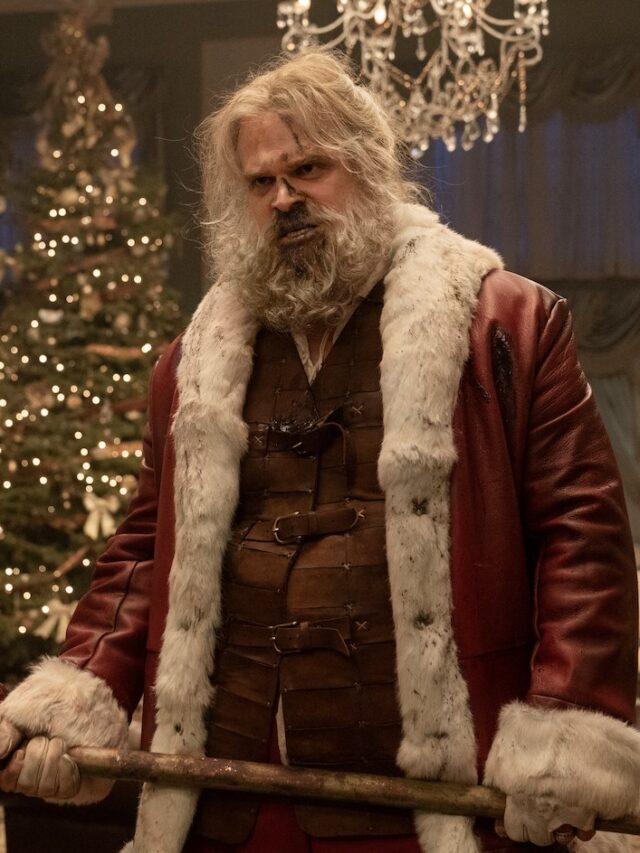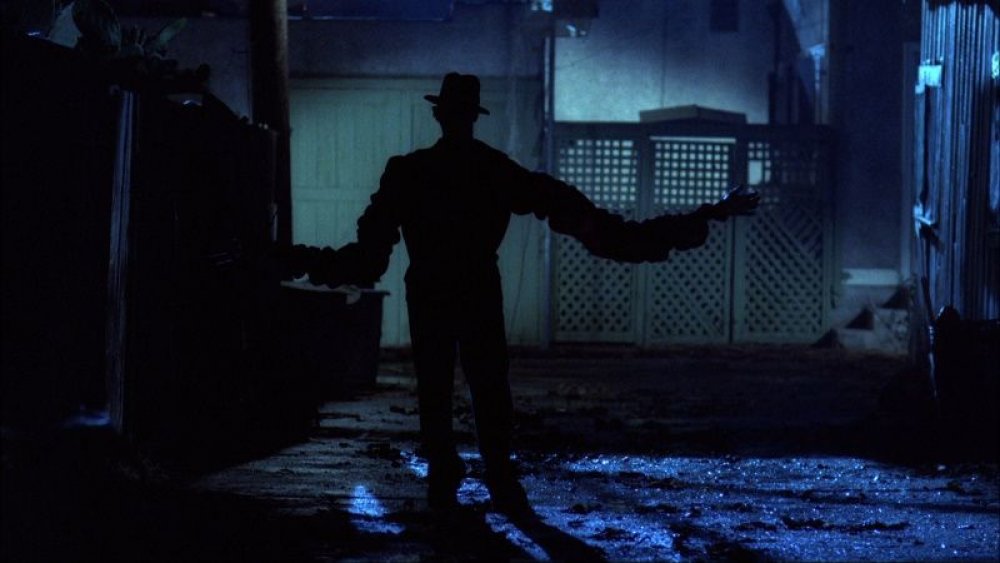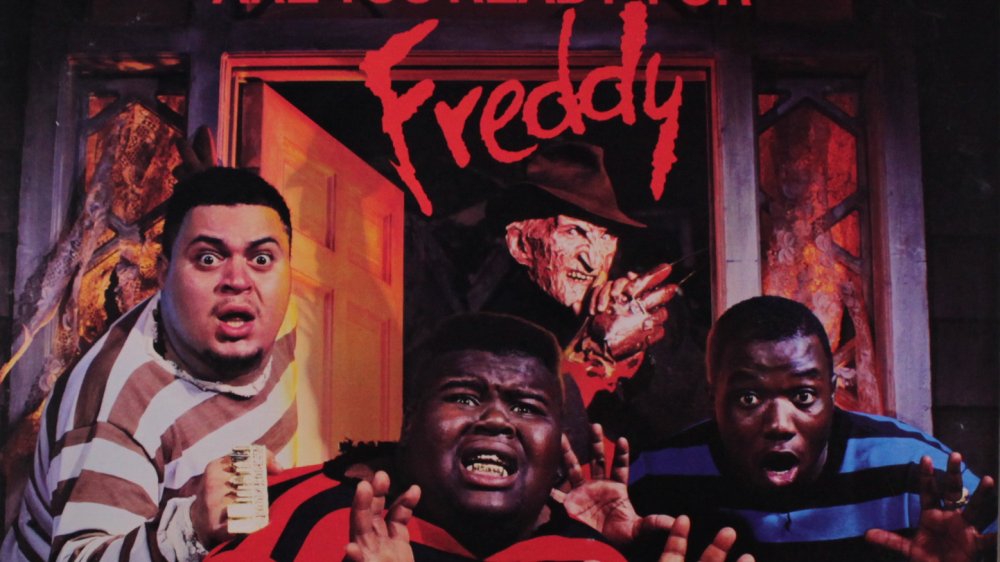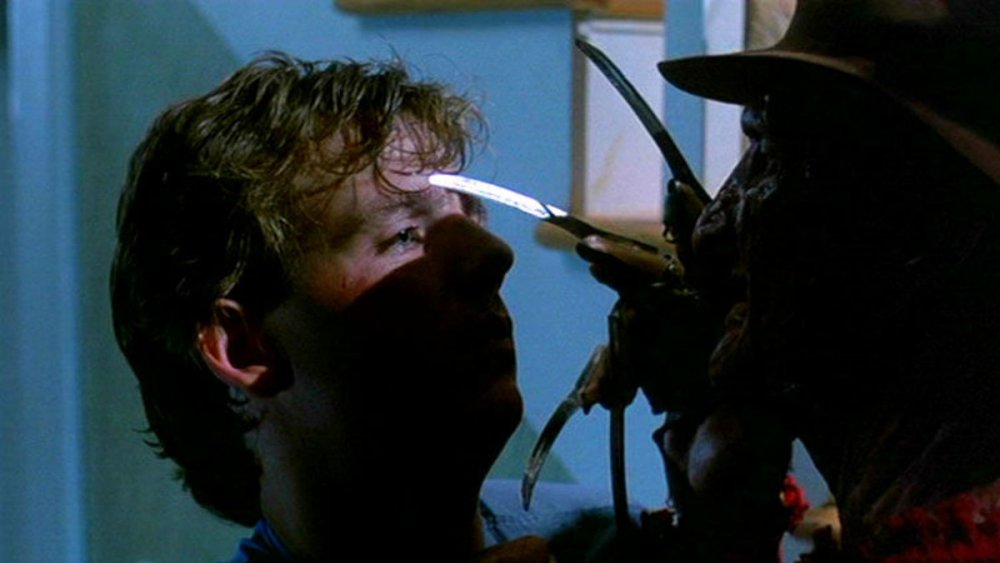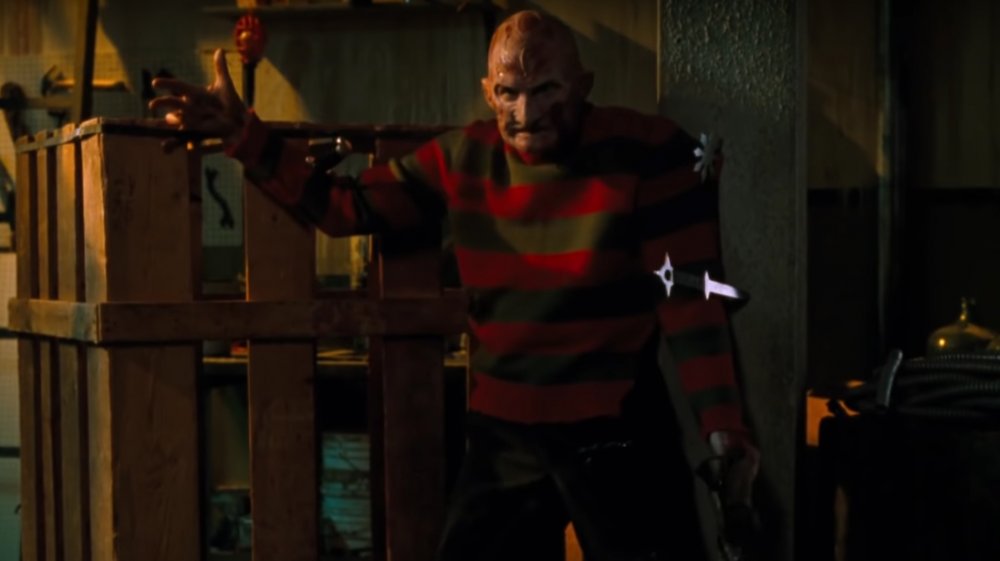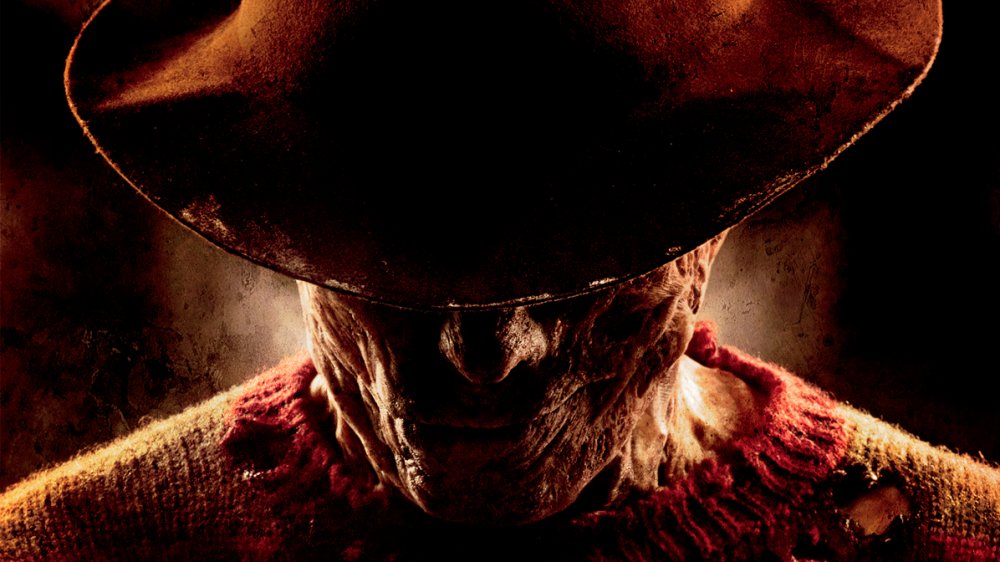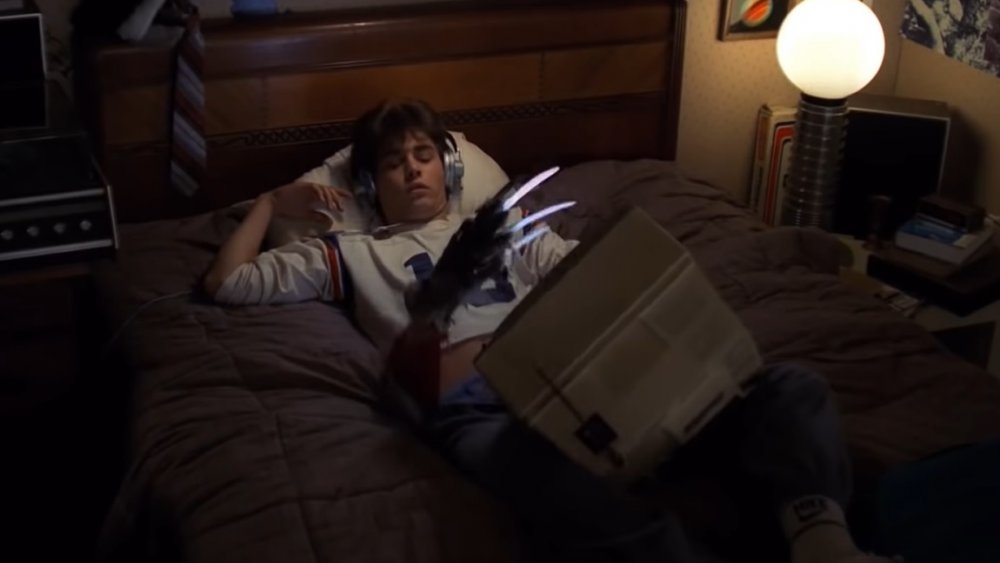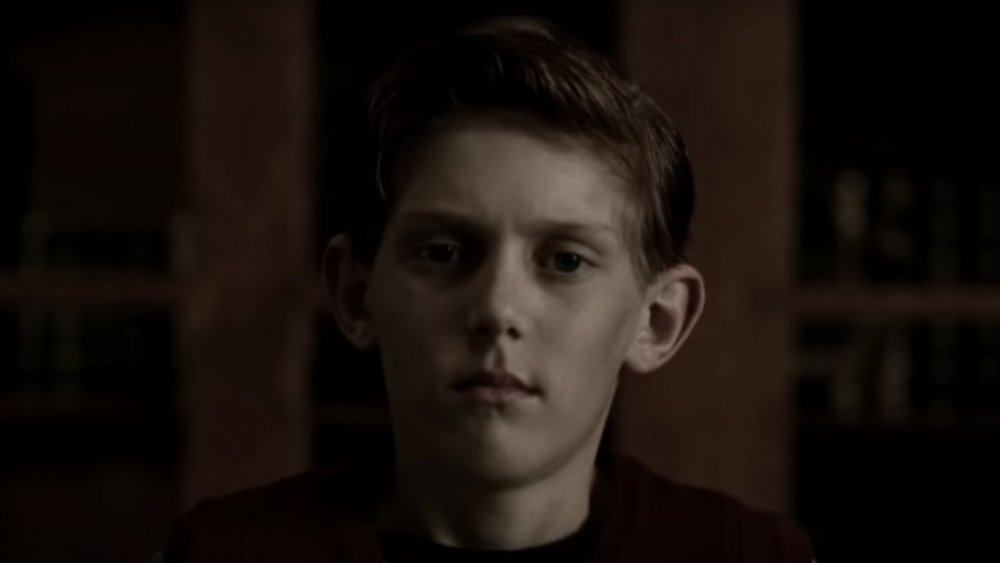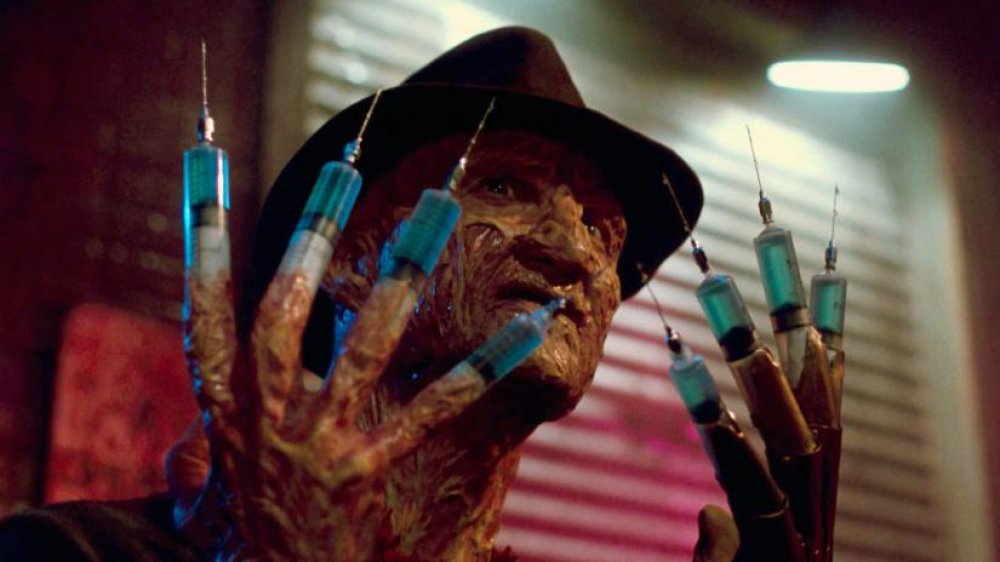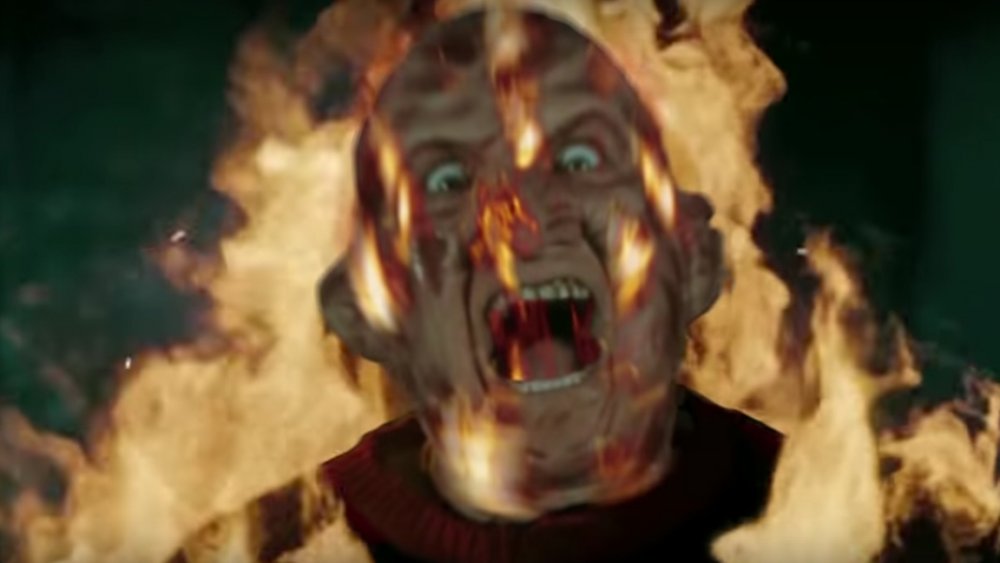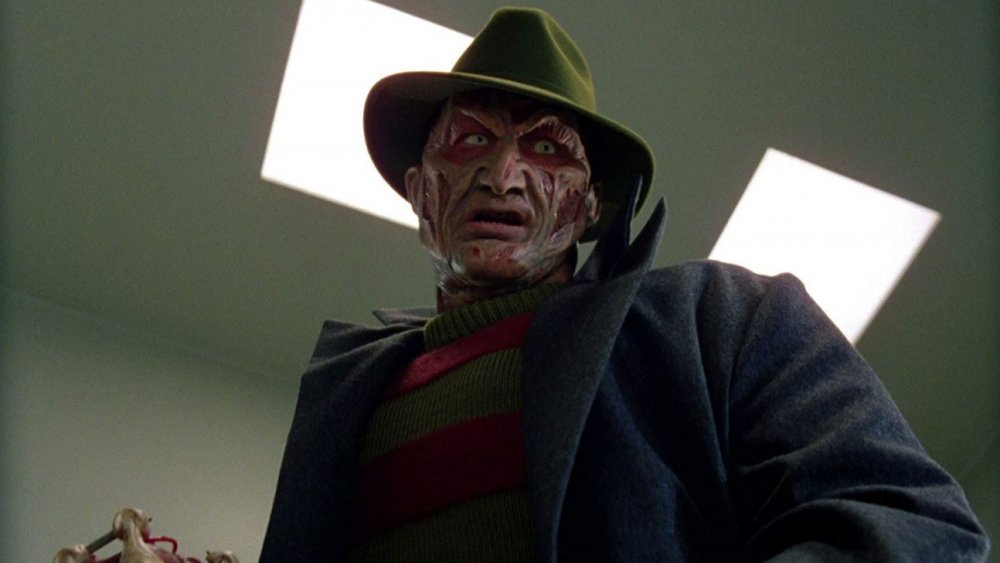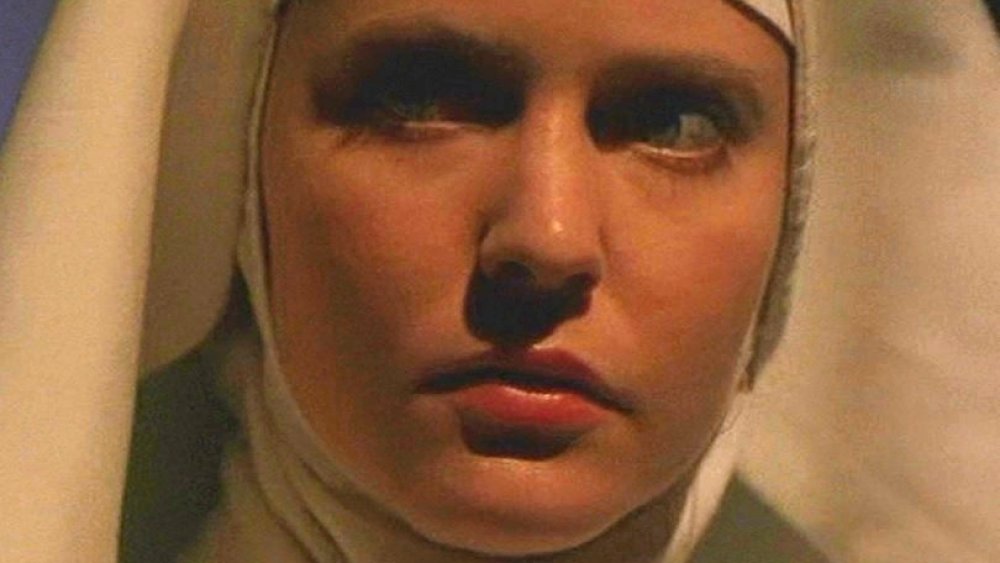In A Nightmare on Elm Street from 1984, Frederick Charles Krueger was unlike anything that mainstream horror viewers had ever seen when he first emerged from our dreams and into our automobiles. Freddy had the “it” quality of a movie monster—he was mutilated, cruel, and gloriously sadistic. He was imperceptible. He was combative. Go back to bed, sweetheart; he was probably just a creature of your imagination.
In addition to all of that, he was also extremely successful, earning close to $500 million. A worldwide commercial sensation, including anything from knife-fingered glove replicas to the incomparable “Freddy Fright Squirter,” followed his spectacular climb to fictional prominence.
But in the midst of all the celebrity hullabaloo, we’ve forgotten to focus on the most crucial issues. such as, “Who is the true Freddy?” Why is he so furious? The most crucial question is, “Wouldn’t it be simpler to just hold one knife like a typical murderer?” In all seriousness though, it’s simple to forget where this killer came from, why he became so famous, and what made him apart from the rest of the slasher pack after decades of Freddy legend.
So now, we’re delving deep into the character who caused the third-degree burns in order to comprehend him in ways you’ve only ever imagined. The origin tale of Freddy Krueger, from his horrific conception to his confrontation with Jason, is presented here.
Table Of Content
- 1 Freddy becomes a nightmare
- 2 Freddy’s domestic bliss
- 3 Freddy’s other outings
- 4 Freddy’s Revenge
- 5 Freddy’s weaknesses
- 6 Freddy Krueger gets remixed
- 7 Freddy Krueger’s powers and abilities
- 8 Freddy Krueger’s troubled childhood
- 9 Freddy Krueger vs. the Dream Warriors
- 10 Pitchforks and torches
- 11 The Dream Master, The Dream Child, and Freddy’s Dead
- 12 The Entity
- 13 The grudges
- 14 The son of 100 maniacs
Freddy becomes a nightmare
What transpired to Freddy following his agreement with the Dream Demons? Freddy made his first known appearance in the form we’ve all come to know and fear in A Nightmare on Elm Street 13 years after his horrible baptism by fire. He started to torment the dreams of the Springwood children, including Tina Gray, Rod Lane, Glen Lantz, and our heroine, Nancy Thompson, with his nasty new collection of superpowers. He began the horrifying task of murdering children out of retaliation for his demise and out of sheer malice.
Tina was the first to perish. She had a nightmare about a man with claw-like hands pursuing her through a boiler room at the beginning of the actual story. Tina committed the classic error of being a sexually active teenager in a horror movie, and she was punished with a glove-slashing in the dream world.
Freddy would then quickly strangle both Rod, Tina’s boyfriend, and Glen, Nancy’s boyfriend, in what has come to be known as the Great Depp Frappeing of 1984. While this was happening, Nancy was able to repel the evil assassin by relying solely on her brains and willpower. But did she? She undoubtedly appeared to be murdered at the end of the movie while Krueger was portraying an evil Knight Rider. It’s best not to ruminate on it.
Freddy’s domestic bliss
It’s unclear what happened throughout Freddy’s adolescent years, and it’s also unclear whether or not he ever received punishment for the death of Mr. Underwood. Fred Krueger was in the family way by the middle of his 20s, according to what is known. He had wed a woman named Loretta, who had Katherine as her daughter. They shared a life that appeared to be straightforward, joyful, and ordinary to outsiders.
But a sinister truth was hiding just below the surface. Freddy had created a hidden room in the suburban home of the family because he was unable to control his insatiable bloodlust. He maintained a number of improvised weapons, newspaper articles, and artefacts from his side hobby—murdering kids in Springwood, Ohio—which he did under the alias of the “Springwood Slasher.”
Marriage is, if nothing else, based on trust, and when Loretta learned about Freddy’s eerie man cave, her family’s life took a turn for the worse. Freddy murdered his wife in front of their little daughter in an attempt to sort of establish himself as a one-note tune. Soon after, he was detained for the murders of numerous neighbourhood kids, and Katherine was given a new name and placed in foster care.
Freddy’s other outings
Even during his cinematic slow spells, America’s favourite charbroiled maniac still finds reasons to leave the house occasionally. A light like Freddy Krueger’s isn’t something you hide under a bushel. When his glove featured in Bride of Chucky and Evil Dead II, it was a subtle allusion at times. Scream features Wes Craven as Fred, a janitor wearing a red and green sweater. Even the 2017 IT reboot features A Nightmare on Elm Street 5: The Dream Child showing in a theatre.
Freddy dared to make an appearance in other media. In Steven Spielberg’s CGI tribute to buying the rights to a number of movie characters, Ready Player One, he briefly appears. In 2018, Robert Englund, the long-running original performer of Freddy Krueger, made an appearance as his most well-known character on the ABC sitcom The Goldbergs. Krueger appears as a DLC fighter in Mortal Kombat from 2011 for fans of unrivalled video game devastation.
However, none of these instances compare to Freddy’s main strength, which is rocking the mike. The 1988 Fat Boys collaboration “Are You Ready For Freddy?” and, lest we forget, that single by Will Smith where a just-this-side-of-copyright-violation dream demon with knives for fingers murdered DJ Jazzy Jeff are just a few of the musical numbers that feature the Springwood Slasher that just scream “artistic integrity.”
Freddy’s Revenge
A Nightmare on Elm Street’s sequel, Freddy’s Revenge, exceeded the strangeness of the original film’s ending in every way. The guidelines that guided the first movie sort of vanished, and Freddy evolved into less of a dream monster and, for one brief chapter in a series that would go on to last decades, into a clear allegory for suppressed homosexuality.
The peculiarity of the second instalment of the series cannot be emphasised enough. Jesse, the protagonist, was a young man who moved into Nancy’s former home on Elm Street. Instead of appearing in the child’s dreams, Krueger would actually possess him, eventually taking control of his body and manifesting as his burned-out form. Eventually, the powers of… something (perhaps self control?)… prevailed, and Freddy was returned to the unconscious world. Look, it’s. It is the series’ oddball. Before passing out in the shower area, Jesse’s coach, who was dressed in leather daddy-go-out gear, was pounded with sporting goods. Although not precisely a classic classic, it is a cult favourite.
Freddy’s weaknesses
Being employed by the Dream Demon has many benefits, but it also has some drawbacks. The most important of these is that you are essentially trapped in the Dream Realm, a paranormal fusion of the collective unconscious. Mr. Krueger’s return to the physical plane is troublesome since, while residing in our workaday, vanilla reality, he becomes vulnerable to pain and even death.
For instance, in Freddy’s Dead, the sixth instalment in the original franchise, Freddy’s estranged daughter was able to drag him back into reality, making him unusually vulnerable to being stabbed and blown up with a pipe bomb. If the movie hadn’t been titled Freddy’s Dead, we would have marked that information as “spoilers.”
Life in the Dream Realm can be just as frustrating in the interim. In general, barring outside interference, Freddy can only eat the souls of those who live in Springwood. Even then, his abilities are only effective when the decent citizens of Springwood are actively terrified of Elm Street’s favourite burn victim. Freddy is just a horrible dream if no one remembers him. In later instalments of the series, Krueger made it clear that it was only children’s terror that gave him power, indicating that he could always be stopped by a generation of bedtime stories that don’t damage childhood.
Freddy Krueger gets remixed
The gritty, unpopular reboot era began after the self-aware 1990s and the kind of drag early 2000s. A Nightmare on Elm Street, released in 2010, was there.
The Nightmare on Elm Street revival on the scene at the end of those two years, when superheroes weren’t quite fully functional money-printing machines and nostalgia still appeared to be the Hollywood team to beat. It stated its truth despite being heavily color-filtered, lacking any comic relief, and having a main actor who was perhaps too talented for the part. Hey, it seemed to be saying to the world, “What if Freddy Krueger—who is typically the only character in these films to appear to be having fun—was simply yucky and unsettling and resembled a ghoul from Fallout 3?” And the general public gave a loud “who cares” in response.
The film was a financial failure, but it nevertheless managed to outperform the great American cash grab Freddy vs. Jason in terms of Rotten Tomatoes rating. Some genuinely scary nightmare sequences and the extra dread effect of simply declaring that Krueger was a child molester—a point that the prior films skirted around—were tenable aspects. Less tenable aspects of the movie included… well, pretty much everything else. It failed so miserably that it succeeded in delaying a Child’s Play relaunch for close to another ten years.
Freddy Krueger’s powers and abilities
The Dream Demons gave Freddy talents that were well within the purview of “altogether ookie,” thanks to their connection. Krueger first of all became an inhabitant of “the Dream Realm,” a plane of existence where subconscious thought occurs in humans. As long as he was still remembered and feared in the real world, he had the power to alter reality while there and influence unawakened people.
His authority over the dream world appeared to be almost limitless. He had the power to alter his appearance, telepathically move things, and modify dreamers’ physical representations. Any harm that Freddy inflicted in a dream also occurred in the real world, which had to be a paperwork nightmare for any Elm Street homicide detectives and guaranteed overtime for whoever cleaned up the crime scenes. In your nightmare, did you become a geyser of blood and organs? Your parents will experience a double tragedy: not only will your murder go unsolved, but they won’t ever learn the Kelley Blue Book worth of your otherwise in excellent condition mattress.
Freddy Krueger’s troubled childhood
Freddy was a disturbed child, which was understandable. His fictitious patriarch seemed to revel in belting his young ward while being perpetually inebriated. Freddy endured vicious teasing at school because of his ancestry. He began displaying the characteristics of a fictitious serial killer, including killing the school hamster and enjoying the sensation of cutting himself with a straight razor.
It would be wonderful to say at this point that young Frederick underwent a personal metamorphosis, changing from a troubled loner to a passionate force for good, perhaps using his knowledge of the shadowy side of the human psyche to aid others on their path to becoming contributing members of society. Unfortunately, it wasn’t the case. One especially awful day, Freddy jammed his razor blade deep into his father figure’s eye socket because he couldn’t take the relentless barrage of abuse from his adoptive father. One may claim that this was the place where any hopes of a happy existence died and the Springwood Slasher was born, despite the fact that a life engulfed in violence and sorrow is impossible to mark with clear turning points.
Freddy Krueger vs. the Dream Warriors
After Freddy’s Revenge’s bizarreness, Krueger returned to his usual antics in A Nightmare on Elm Street 3: Dream Warriors. We learned that since the sequel, the second most well-known Fred to ever grace a neighbourhood had been staying busy. The survivors from Elm Street’s children were all either murdered or rendered severely insane, and they shared an asylum. You have it, then. The story comes to an end here. There were no more worlds for Alexander to conquer, so he sobbed.
But there was a catch! Who else except Nancy Thompson from the first film, who now works in the hospital and is pursuing graduate school goals, brought the asylum’s residents together? A lot of material was then delivered quite fast after that. Young Kristen Parker, one of the patients, had the capacity to draw other individuals into her dreams. The people who were inside such dreams received superpowers. The good men heard from the spirit of Freddy’s deceased mother that Freddy could be stopped if his bones were buried and made holy. Due to a quick burial, Freddy ended up dead, and no one saw or heard from him again.
All of them did. Depending on whether or not you count New Nightmare (we’ll get to there), in five more movies, plus a cameo in a Jason movie and a TV show. From here, things become somewhat hazy. Let’s start now.
Pitchforks and torches
The arrest of Fred Krueger and his following trial brought out the worst in the fine people of Springwood. Justice for the roughly 20 children who died at the hands of the Springwood Slasher’s beknife hung in the balance due of the overwhelming evidence that proved his guilt.
Unfortunately, the American criminal justice system is far from ideal, and the fictional version is even worse. Krueger was released from prison despite being demonstrably guilty due to a lost signature and a judge who was intoxicated. But the Springwood family’s parents had little patience for that kind of deceit.
The noble people of Springwood assembled an old-fashioned vigilante mob, catching Fred and dousing him in gasoline before setting him ablaze in a sight reminiscent of the community’s assault on Castle Frankenstein. They had no idea that Krueger was being approached by Dream Demons as they watched the structure burn to the ground. As their extraterrestrial adversary, Krueger was given the chance to continue his sadistic behaviours endlessly by these supernatural beings.
The Dream Master, The Dream Child, and Freddy’s Dead
As is customary in Nightmare on Elm Street sequels, Freddy made a reappearance in A Nightmare on Elm Street 4: The Dream Master. Here, he quickly recovered and dispatched all of those bothersome Dream Warriors children as though he were living out the power fantasy of a Scooby-Doo villain. Alice Johnson, a teenage sleep messiah and “Dream Master,” who could control good dreams the way Freddy could control terrible ones, defeated him here.
But you can’t keep a good son of a hundred maniacs down, and in the fifth movie, The Dream Child, Freddy bizarrely gave birth to himself from the ghost of his deceased mother. Then he attempted to take control of Alice Johnson’s unborn child, but when he went back to being a baby and was re-absorbed by his ghost mother, he ended up personifying the adage “you go out the way you came in.”
Thus, Freddy’s Dead: The Final Nightmare comes into play. The movie is set in a Biff Tannen-esque future years after the events of the previous films, where Freddy eventually accomplished his ambitions, and it is set in a Springwood devoid of youth as a result of the knife-wielding lunatic. But what use are realised goals if not as a sombre warning that the younger generation will soon take our place? By the time the credits rolled, Freddy and his long-lost daughter had found each other, and she had drawn him into the physical world and given him a severe stabbing, finally consigning Krueger to Hell. Ish.
The Entity
Any brand-friendly fictional character worth his salt today has undergone at least six redesigns, reboots, and reimaginings. Wes Craven’s New Nightmare, a somewhat bananas film, gave Freddy Krueger a head start on the craze.
When it was first released in 1994, when fourth walls were still usually thought to be load bearing, New Nightmare proposed that a fictional character’s essence may contain an incarnation of evil, and that Freddy Krueger had become the residence of one such “entity.” In the movie, this demonic power escaped the boundaries of the made-up world and wrecked havoc on the creation of a new Nightmare on Elm Street instalment as well as the real-life people who worked on the project, including Wes Craven and actress Heather Langenkamp.
Bonkers? Absolutely, and perhaps a little less relatable than the comparatively simple agent of legendary nightmare creatures to which viewers had grown accustomed. In contrast to other films, the movie did poorly at the box office, but it received generally positive reviews. It also received the highest Rotten Tomatoes rating since the original and may have served as a precursor to later meta horror films like Scream and The Cabin in the Woods.
The grudges
A monster is only as impressive as its outrageous takedowns. Freddy Krueger has a respectable history of acting as the king of the hill with other fictitious freak exhibitions, continuing the honourable tradition of Godzilla versus King Kong and Batman v. Superman.
The most well-known of them was Freddy vs. Jason, a critically panned but eagerly anticipated film that attempted to answer the hypothetical question: “What if we created a film about Freddy fighting Jason but we didn’t, like, try super duper hard?” It was a pre-MCU cross-promotional extravaganza from the same time period as Alien vs. Predator and Ballistic: Ecks vs. Sever, but it fell short of capturing the monster-on-monster, beat-’em-up spirit of classics like Kramer vs. Kramer.
Fortunately for those who thought that the crossover left them with unresolved issues, a follow-up comic featuring Bruce Campbell was published a few years later. Bruce Campbell is the one thing that, mathematically speaking, can only enhance a product that has been liberally sprinkled with it. It’s impossible not to appreciate the 2007 miniseries Freddy vs. Jason vs. Ash (yep, Ash from the Evil Dead fame).
It’s also important to note that Freddy would have had a brand-new fight on his clumsy knife hands in a parallel universe where events had turned out somewhat differently. One possible resolution that was dropped due to rights concerns, according to the Freddy vs. Jason screenwriters, involved Jason and Krueger being taunted by Pinhead from the Hellraiser series while they were both together in Hell.
The son of 100 maniacs
Frederick Charles Krueger could never expect things to be simple. His mother, Amanda Krueger, went under the name Sister Mary Helena, as described in A Nightmare On Elm Street 3: Dream Warriors. She served as a nun at the Hathaway House, a facility for criminally insane people. Several days before Christmas 1941, Amanda became the object of a festive mix-up. When the guards left for the long weekend, leaving the high-security hospital unattended as is common during the holidays, she was imprisoned within the structure. By the time she was discovered, the convicts had brutally attacked her numerous times, and she was also expecting “the bastard kid of 100 Maniacs.”
Baby Freddy was born nine months later, bouncing around. Never one to take no for an answer, he was given up for adoption by Mr. Underwood, an abusive drinker who had an uncanny resemblance to Alice Cooper. Predictably, what happened next was a giant nightmare.
Being a binge-watcher himself, finding Content to write about comes naturally to Divesh. From Anime to Trending Netflix Series and Celebrity News, he covers every detail and always find the right sources for his research.




